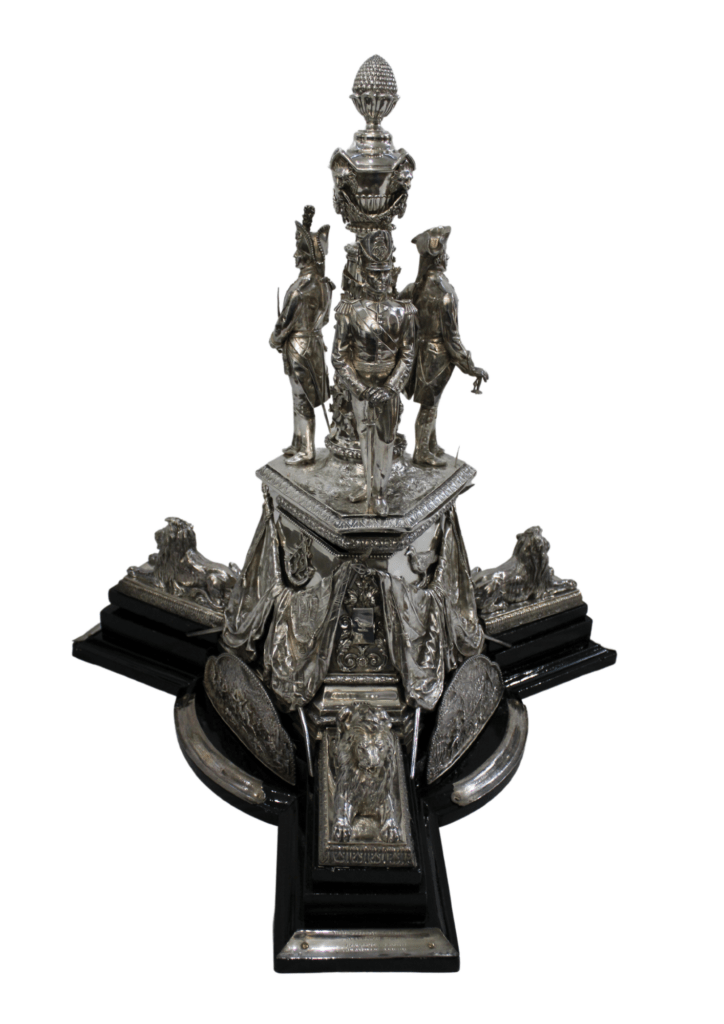For this month’s, Artefact of the Month, we have chosen to spotlight a majestic silver centrepiece on display in our nineteenth-century gallery. This is a silver centrepiece used to decorate dinner tables for regimental dinners in the Mess. There are three types of officers’ mess for higher-ranking soldiers; the Officer’s Mess, the Serjeant’s Mess, and the Corporal’s Mess. The Mess is a gathering place for officers to eat and socialise away from the soldiers they manage. It is also where they host regimental dinners, often commemorating battles in the regiment’s history. The Mess has no fixed location, moving with the officers whether in the barracks or in the field.

When fully dressed for a regimental dinner the dining table is adorned with silver collected by the regiment and its predecessors over centuries. This includes grand centrepieces like this as well as sporting trophies and ornate serving plates and table settings. The use of silver started with individuals (often aristocrats) taking their family silver into the field to make life more comfortable. The Regimental Colours (flags) and pictures of important figures are often hung on the walls of the Mess.
This impressive silver centrepiece formed part of the regimental silver of the 1st Battalion Duke of Cornwall’s Light Infantry (who were based in the army barracks in Bodmin now housing the museum). The silver was paid for by several Officers in the late 1870s whose names are engraved on panels around the base. The regimental silver centrepiece displays three figures representing the forming regiments of the 1st Battalion including a soldier from the Fox’s Marines in 1704, the 32nd Regiment of Foot in 1745 and another from the 32nd in 1815.
Below the figures are highly detailed decorative panels showing scenes of major battles involving the 32nd Regiment of Foot. The three battles depicted are those of Waterloo in 1815, the Battle of Corunna in 1809, and the Relief of Lucknow in 1857. Hidden between these are three symbols of Cornwall; the Cornish chough, three pilchards, and a piece of Cornish tin.


